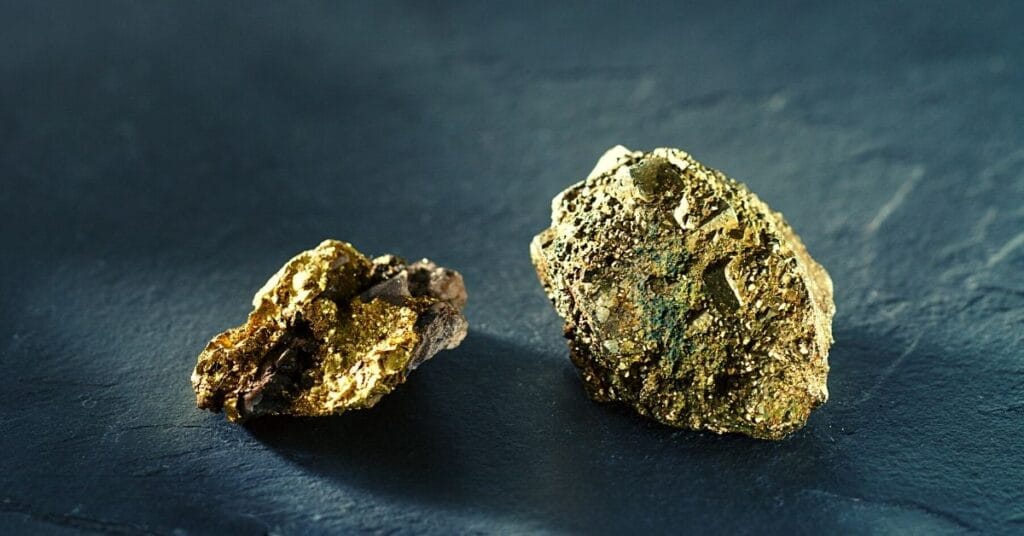Fool’s Gold, a term that conjures images of glittering rock formations and the tantalizing promise of wealth, is actually a mineral known scientifically as iron pyrite. With its brassy-yellow hue and metallic luster, iron pyrite has captured the imagination of mineral enthusiasts, geologists, and treasure hunters alike. In this blog post, we will take an in-depth look at this fascinating mineral, exploring its properties, occurrences, historical significance, and even its modern-day applications. dcpipe pipeline expert
What is Fool’s Gold?
Iron pyrite (FeS₂) is a sulfide mineral composed of iron (Fe) and sulfur (S). Characterized by its distinct metallic luster and pale brass-yellow color, it notably resembles gold, which is what earned it the moniker “fool’s gold.” This resemblance has led to numerous misconceptions throughout history, where individuals mistook it for real gold—sometimes with regrettable financial consequences.

Physical Properties of Iron Pyrite
Iron pyrite exhibits a cubic crystal system, forming in isometric shape, and often occurs as pyritohedral crystals, which are rounded and exhibit a unique geometric appearance. The mineral has a hardness of 6 to 6.5 on the Mohs scale, meaning it can scratch common materials like glass but is softer than harder minerals such as quartz. A distinctive feature of pyrite is its characteristic streak, which appears greenish-black or brownish-black when the mineral is rubbed against a porcelain streak plate.
In terms of density, iron pyrite has a relatively high specific gravity ranging between 4.8 and 5.2, making it heavier than many other minerals. When exposed to air, it is known to oxidize, forming various secondary minerals, including sulfuric acid, which can lead to environmental concerns, especially in mining sites.
Occurrences and Geological Context
Iron pyrite is widespread in numerous geological settings. It can be found in sedimentary rocks, hydrothermal veins, and metamorphic rocks. Significant deposits of fool’s gold are often located in areas rich in organic material. For instance, it is commonly associated with coal seams and shales, where it forms during the decomposition of organic matter.
Globally, notable find locations include the following:
- Spain: The famous pyrite deposits in the Rio Tinto mining district have yielded significant amounts of iron pyrite and other sulfides for centuries. The area has a rich mining history stretching back to ancient Roman times.
- California: The California Gold Rush was not only about extracting gold but also resulted in numerous discoveries of iron pyrite. The mineral was often found in gold-bearing quartz veins, confusing miners who mistook it for the precious metal.
- Sweden: Localities in Sweden, especially around the Bergslagen district, have produced high-quality pyrite crystals that are prized by collectors.
- China: As one of the largest producers of pyrite, China is currently leading the way with extensive mining operations focused on both iron pyrite and its byproducts.
Historical Significance and Cultural Impact
Throughout history, iron pyrite has had a notable presence in various cultures, serving both practical and decorative purposes. In the 19th century, during the Gold Rush era, the confusion between fool’s gold and actual gold led to the term “fool’s gold” used to describe this mineral, stemming from the disillusionment of prospectors who found their hopes dashed.
In ancient times, pyrite was utilized by civilizations such as the Incas and Aztecs, who believed that it possessed protective and healing properties. Tools made from iron pyrite were often used in rituals, and the mineral was sometimes fashioned into inlays for ceremonial artifacts.
Pyrite in Modern Applications
Despite its misleading name, iron pyrite has a variety of industrial applications. Here are some noteworthy uses:
- Sulfur Production: One of the primary modern uses of iron pyrite is in the production of sulfur. When burned, the sulfur content of pyrite can be recovered and used in the manufacturing of sulfuric acid, one of the most widely produced industrial chemicals globally.
- Geopolymers and Concrete Additives: Pyrite is increasingly being studied for potential applications as a reducing agent in geopolymers, promising materials for sustainable construction and engineering.
- Solar Cell Manufacturing: Recent research has highlighted the potential of iron pyrite as a semiconductor material for solar cell applications. Its abundance and favorable properties could make it a key player in the next generation of photovoltaic technologies.
- Jewelry and Decorative Items: While it lacks the value and prestige of gold, fool’s gold is still popular in jewelry making. Its distinctive color and glittering appearance make it sought-after by artisans and collectors.
Environmental Concerns
While iron pyrite has various uses, its presence in mining operations can lead to severe environmental issues. When exposed to air and water, iron pyrite undergoes oxidation, resulting in acid mine drainage (AMD). This process releases sulfuric acid and can lead to the contamination of nearby water systems, rendering the environment hostile to aquatic life.
Mitigation strategies for AMD are a critical focus area in modern mining practices. Efforts include neutralization of acidic water and careful management of tailings to prevent heavy metal leaching.
Conclusion
Fool’s gold, or iron pyrite, is a mineral that embodies both allure and complexity. Its striking appearance has fooled countless prospectors throughout history, while its industrial applications serve as a reminder of the mineral’s practical significance. Whether admired for its beauty or studied for its various properties, fool’s gold continues to captivate human curiosity and drive scientific inquiry. By understanding iron pyrite’s characteristics, occurrences, and implications further, we not only appreciate a fascinating facet of geology but also acknowledge the importance of responsible mining practices in preserving our environment for future generations. dcpipe pipeline expert

